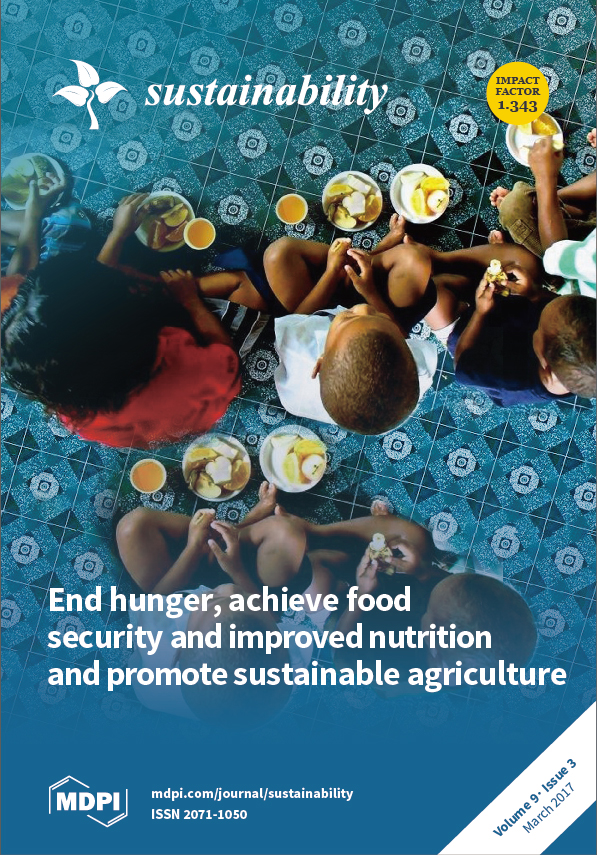In this study, we evaluated the physicochemical and microbial qualities of source and stored household waters in some communities in Southwestern Nigeria using standard methods. Compared parameters include: physicochemical constituents; Temperature (T), pH, Total Dissolved Solids (TDS), Total Hardness (TH), Biological Oxygen Demand
[...] Read more.
In this study, we evaluated the physicochemical and microbial qualities of source and stored household waters in some communities in Southwestern Nigeria using standard methods. Compared parameters include: physicochemical constituents; Temperature (T), pH, Total Dissolved Solids (TDS), Total Hardness (TH), Biological Oxygen Demand (BOD), Magnesium ion (Mg
2+) and Calcium ion (Ca
2+) and microbiological parameters included Total Coliform Counts (TC), Faecal Coliform Counts (FC), Fungal Counts (Fung C), Heterotrophic Plate Counts (HPC).Comparing Stored and Source samples, the mean values of some physicochemical parameters of most of the stored water samples significantly (
p < 0.05) exceeded that of Sources and ranged in the following order: T (15.3 ± 0.3 °C–28.3 ± 0.5 °C), pH (6.4 ± 0.1–7.6 ± 0.1), TDS (192.1 ± 11.1 ppm–473.7 ± 27.9 ppm), TH (10.6 ± 1.7 mg/L–248.6 ± 18.6 mg/L), BOD (0.5 ± 0.0 mg/L–3.2 ± 0.3 mg/L), Mg
2+ (6.5 ± 2.4 mg/L–29.1 ± 3.2 mg/L) and Ca
2+ (6.5 ± 2.4 mg/L–51.6 ± 4.4 mg/L). The mean microbial counts obtained from microbial comparison of different points (Stored and Source) of collection showed that most of the stored water had counts significantly exceeding (
p < 0.05) those of the source water samples (cfu/100 mL) which ranged as follows: TC (3.1 ± 1.5–156.8 ± 42.9), FC (0.0 ± 0.0–64.3 ± 14.2) and HPC (47.8 ± 12.1–266.1 ± 12.2) across all sampled communities. Also, the predominant isolates recovered from the samples were identified as
Escherichia coli,
Klebsiella pneumonia,
Pseudomonas aeruginosa,
Enterobacter aerogenes,
Aspergillus spp.,
Mucor spp.,
Rhizopus spp. and
Candida spp. The presence of these pathogenic and potentially pathogenic organisms in the waters and the high counts of the indicator organisms suggest the waters to be a threat to public health.
Full article





